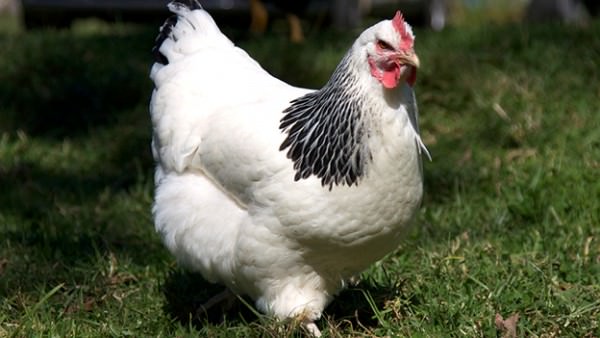
Use: The Sussex is a dual-purpose, heritage chicken breed. Hens are excellent producers of large, cream-colored or light-brown eggs that they lay through the coldest winter months. In addition, they are meaty chickens that fatten easily, and their tender, succulent flesh is second to none.
History: The history of the Sussex chicken breed is unclear. Some poultry historians believe the breed’s ancestors were the same as the Dorking’s and that Sussex history traces to the Roman occupation of Britain. What’s certain is that it was fully developed and present in the English counties of Sussex, Kent and Surrey by the mid-1800s. British cooks once considered Sussex the quintessential table bird. The breed reached America around 1912, and the American Poultry Association’s Standard of Perfection recognized Speckled and Red varieties in 1914. In 1929, a Light variety with a white body and black tail and wing tips was added.
Conformation: The Sussex is a graceful chicken breed with a deep, rectangular body; long, broad back; and tail set at a 45-degree angle from its body. Standard Sussex cocks weigh about 9 pounds and hens weigh 7 pounds. Bantam cocks weigh 36 ounces and hens weigh 32 ounces. In addition to the varieties recognized by the APA, the breed comes in an array of attractive colors, including Coronation (with a white body and lavender-blue tail and wing tips), Buff, White and Silver.
Special Considerations/Notes: The Sussex is an all-around excellent small-farm chicken. They bear confinement well but are also superior foragers and ideal for free-range conditions. They are alert and active but unusually docile, curious and friendly. Hens go broody and are excellent mothers. The Sussex chicken breed is listed as Recovering on the American Livestock Breeds Conservancy’s Conservation Priority List.



